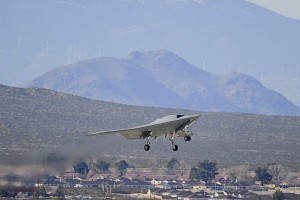 On the eve of the Centennial of Naval Aviation, the San Diego Union-Tribune’s awesome national security reporter, Jen Steele, filed a piece on how UAVs would transform the Navy. I was quoted in the story and you can read the entire piece here.
On the eve of the Centennial of Naval Aviation, the San Diego Union-Tribune’s awesome national security reporter, Jen Steele, filed a piece on how UAVs would transform the Navy. I was quoted in the story and you can read the entire piece here.
Certainly, UAVs are going to have a big role–and make a big difference–in the Navy.
Obviously, on the technical side, UAVs are going to change how the Navy fights, patrols and trains. But on the social side, the advent of UAVs have a chance to really transform Navy society, impacting naval aviators–one of the three big Naval aristocracies. And that’s going to be a fundamental change. As I say in the piece:
But the advent of drones will shake up Navy culture and doctrine.
“Naval aviators, one of the three big naval ‘aristocracies,’ are going to see their influence wane,” said Craig Hooper, a San Francisco-based defense analyst.
“This is a big deal,” he said, adding that since World War II more than a third of Chiefs of Naval Operations — the Navy’s top military officer — have come from the cockpit, rather than ships or submarines.
The Aviation community put an indelible mark on the post-World War II Navy. But as more enlisted folks start flying/sailing/submerging drones from a desk, and as network domination becomes a critical facet of warfare, how can aviators hold on to their position of influence in the Navy?
It is a topic worth mulling: In a world full of unmanned vehicles, will aviators become less dominant?
I suspect the aviator influence will fade. I’m willing to bet that, in the place of aviators, the “third” major community/line officer career path will morph into something different–maybe something focused on unmanned systems of all sorts (undersea, surface and air) versus a solely single-community background (and a note
to those anti-joint folks out there–just wait until we start seeing wide deployment of unmanned vehicles that, in a single mission, cross the surface/subsurface/air boundaries at will) .
There are some signs of change–I mean, take a look at Vice Admiral Bernard J. McCullough’s bio–the Commander of the U.S. 10th Fleet–it reads a little like an officer from the engineering restricted line. Are we going to see Admirals with a McCullough-like “interesting” backgrounds become the founding members of the Navy’s next community-based mafia?
Or is greater change ahead? Will the future line career paths settle into Manned Systems, Unmanned Systems and cyber-assault?
Who knows. But one thing is clear–the advent of unmanned systems offers the Navy an opportunity to shake up the traditional order of things. And that’s OK. But, with every big change comes a lot of friction–so, for all of us naval-gazers, it might be worth brushing up on what transpired the last time an established Naval community became obsolete.
Remember, the demise of the Battleship Admirals–a community that kept the Navy from fully embracing aircraft carriers–was only fully completed in, oh, December 7, 1941.
